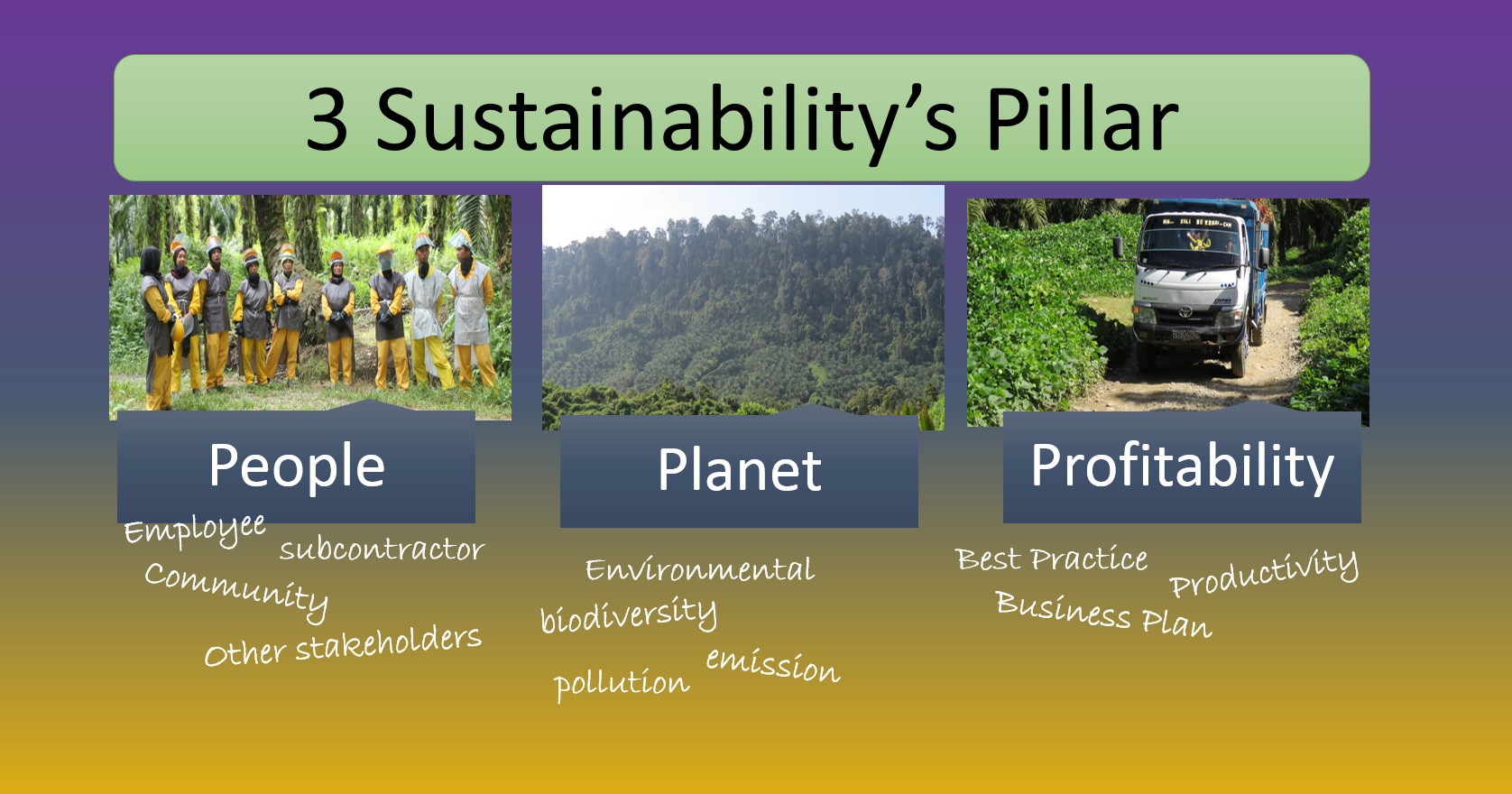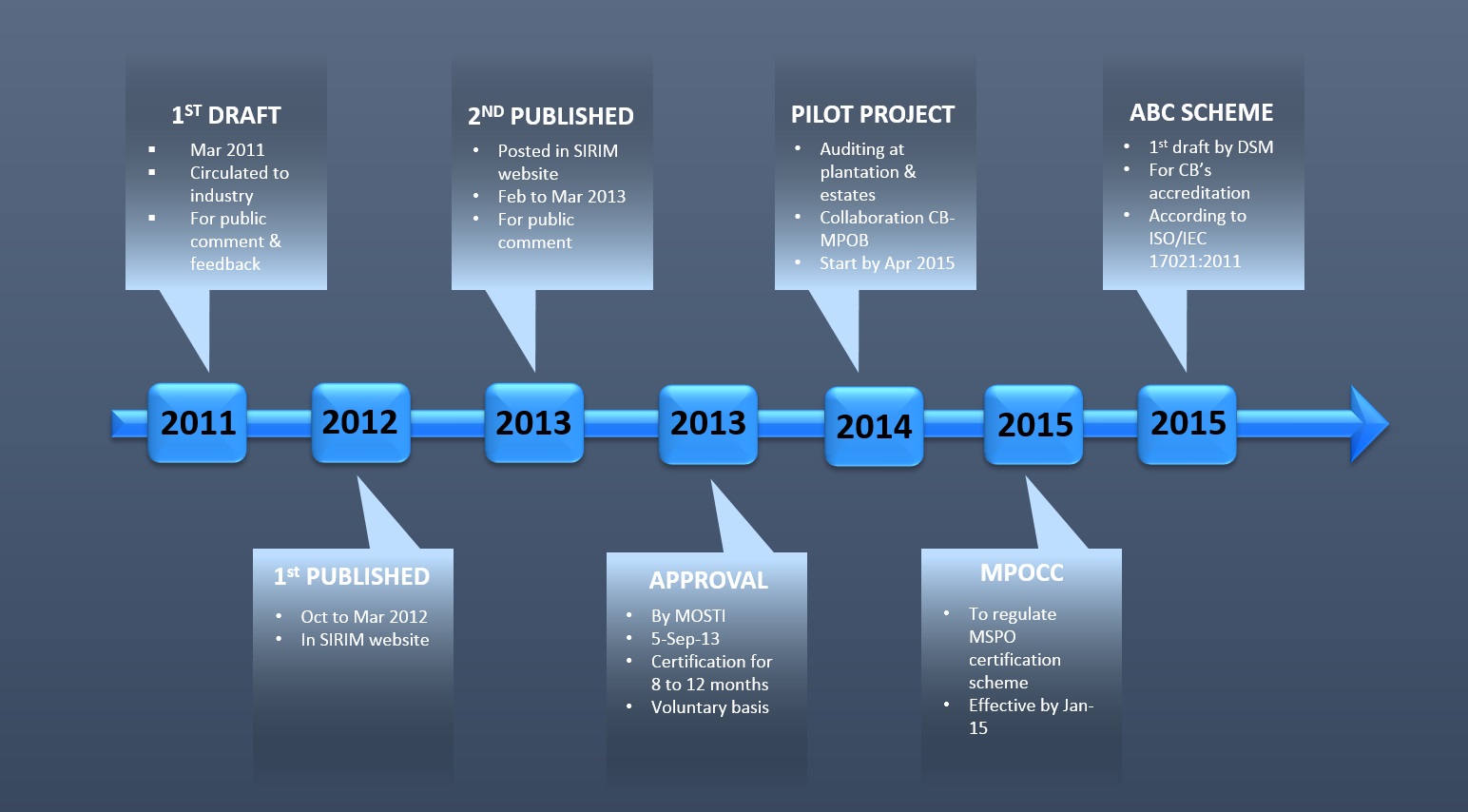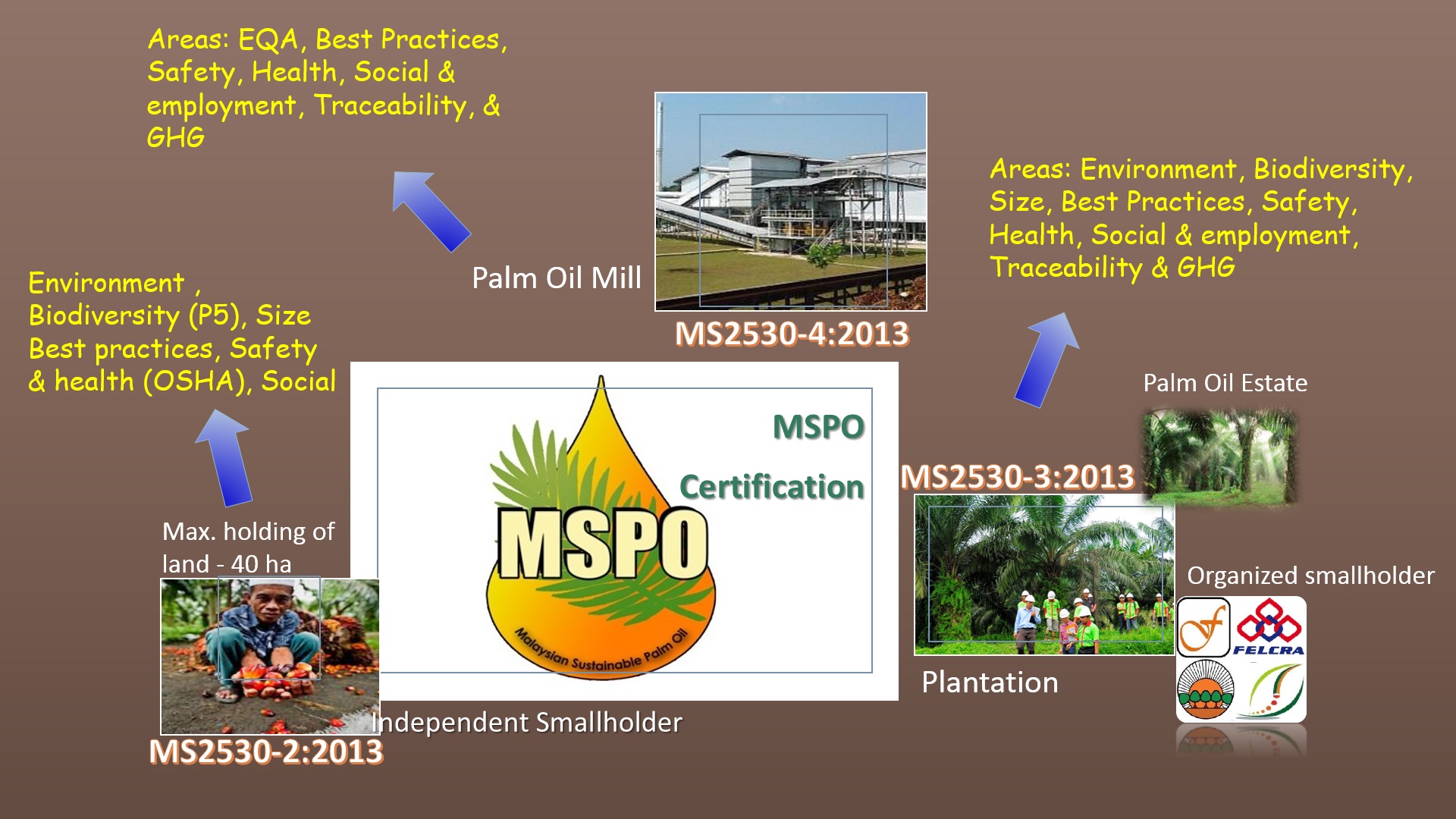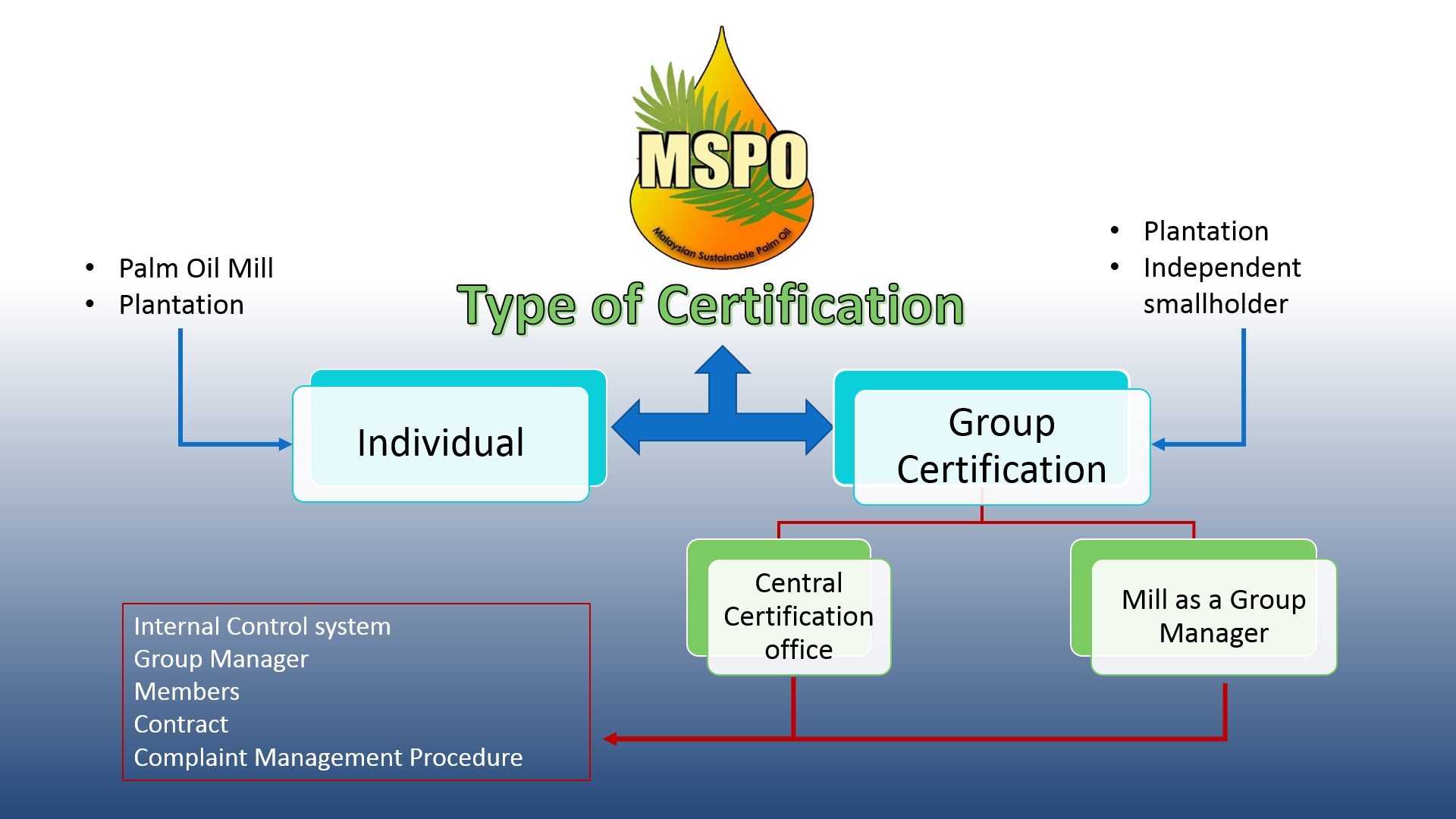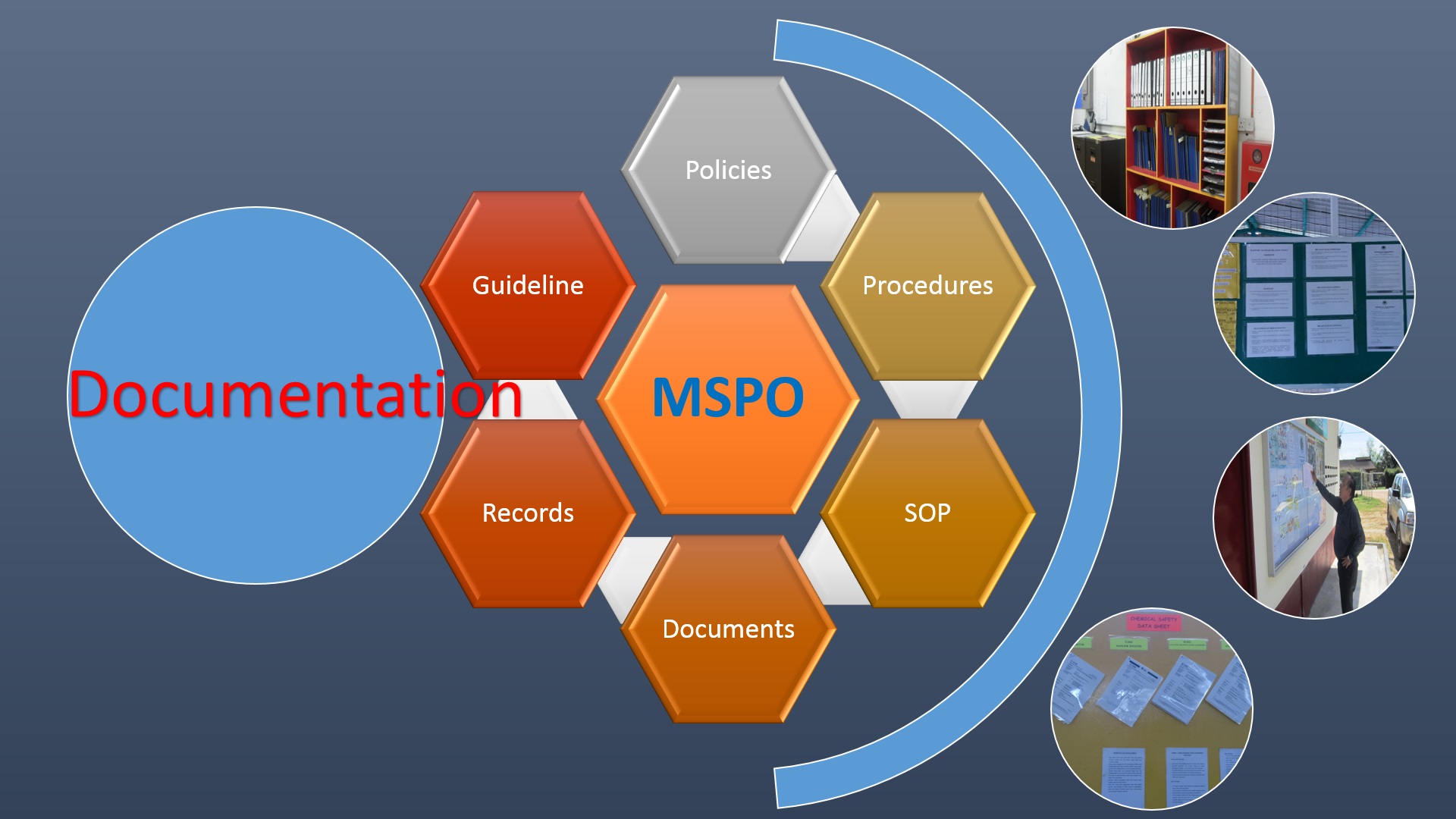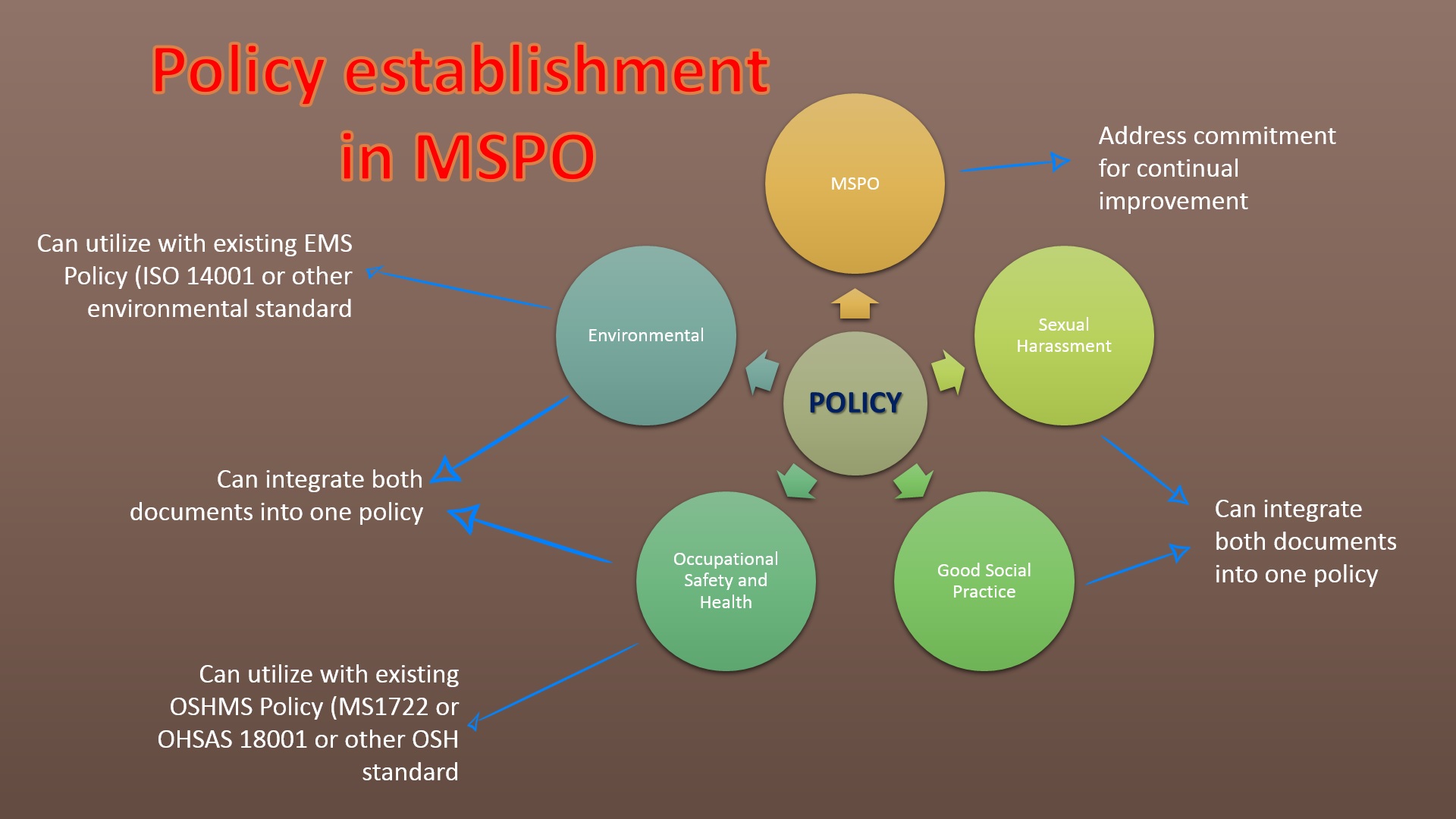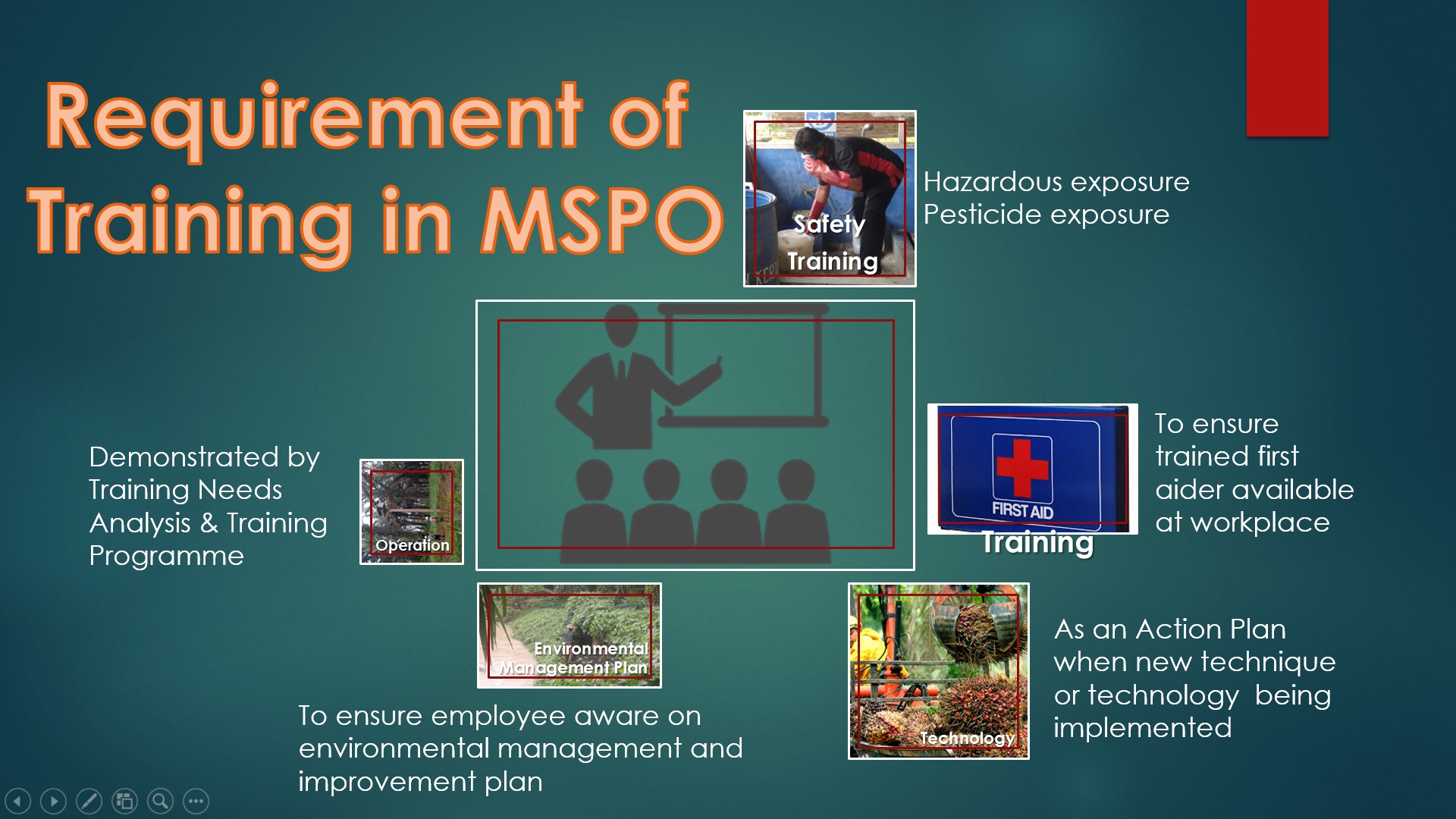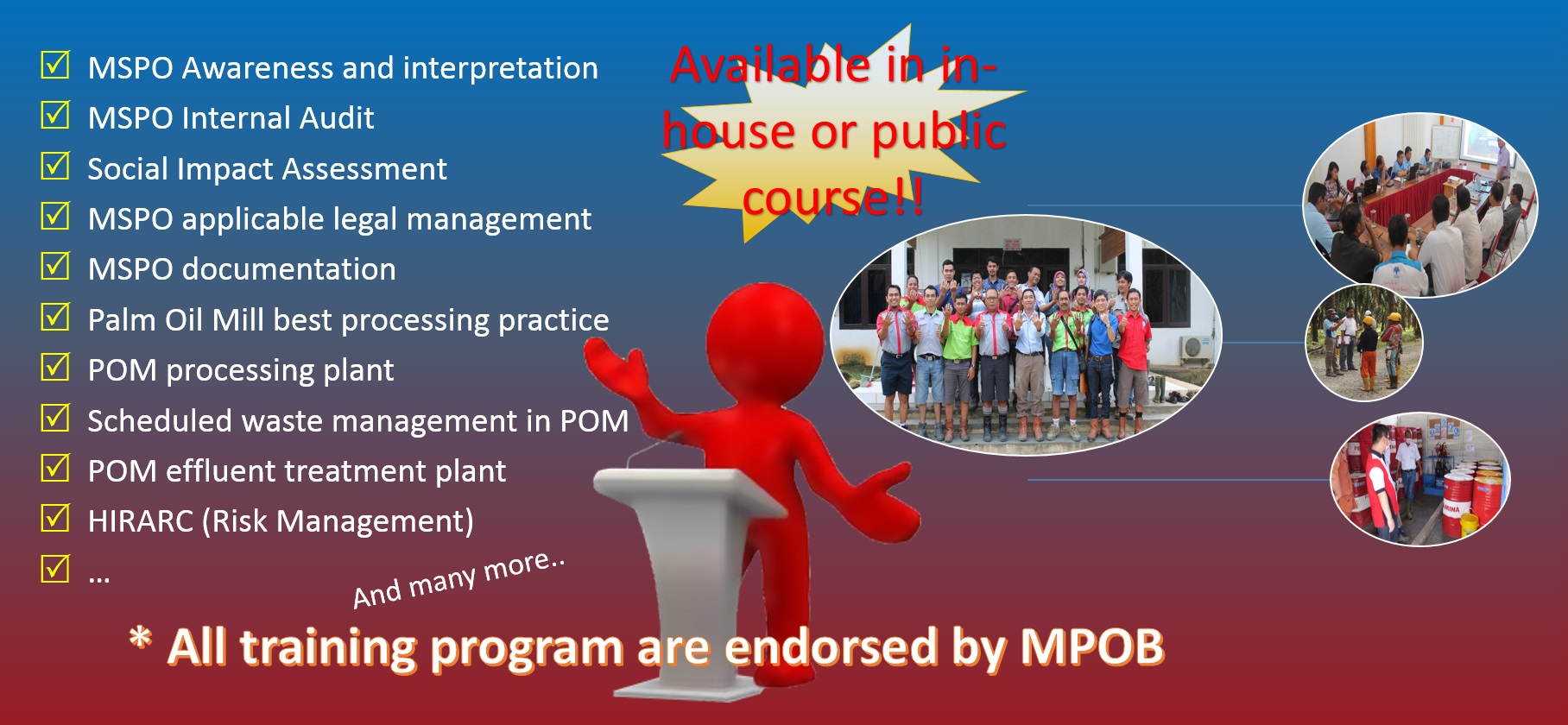MSPO Process Steps
Application
- Submit Application Form to MPOB by Group Manager or Applicant
- MPOB review application, determine the type of premises
- Premise category I - site without recognized sustainable standard certification
- Premise category II - site with attained the recognized sustainable standard certification
- Pass the input to CB
- CB reviews application and interact with premises
- Through Basic Data
- Determine standard for certification
- MS 2530-2:2013 for independent smallholder
- MS 2530-3:2013 for plantation / organized smallholder
- MS 2530-4:2013 for palm oil mill
- Determine type of certification
- Individual certificate
- Group Management certification
- Conduct study
- Risk management initial review
- Stakeholder review
- Audit plan will be generated
- Where 'group certification' is applied, random sampling will follow according to S=r√n Risk factor
- Sampling methodology in accordance to IAF MD 1:2007 – IAF Mandatory Document for the Certification of Multiple Sites Based on Sampling
Stage 1 Audit
- Stage 1 audit can be skipped for the site under category premise II
- CB will schedule Stage I audit
- Audit Plan will submit to auditee
- Adequacy of MSPO documentation
- Raise issues of concern in Stage I audit report
- 6 months interval gap between Stage I and Stage II or otherwise stage 1 shall repeat
- CB will conduct external stakeholder consultation Report endorsed by both parties
- Stakeholder issues shall be verified during Stage II audit
- Schedule the Stage II audit once issues of concern are resolved
Stage 2 Audit
- Verify implementation of MSPO system
- Type of audit findings – non conformities and observations
- Audit findings raised during closing meeting
- Draft report sent to auditee within 30 days after Stage II
- Auditee take corrective actions submit report within 60 days
- CB reviews, accept, verifies corrective actions
- Satisfactory resolution of audit findings
- CB prepares report within 14 days
- Failure to do corrective action within 60 days discontinuation MSPO Certification
- Repeat stage II audit if the premise fail to resolve the issues
- Issuance of certificate with 5 years validity
Surveillance Audit
- Annual assessment done by CB
- Total 4 surveillance audit must be conducted before re-certification will take place
Re-certification Audit
- Same process as per Stage II audit

